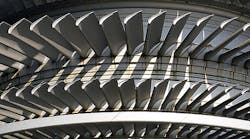Lightweight Research Effort Now Turns to Al-Li Parts for Jet Engines
A new industrial-academic research will seek to predict the performance of aluminum-lithium alloy parts in jet engines and other critical applications. It will be the fourth project launched by LIFT, the Lightweight Innovations for Tomorrow initiative, established in 2014 as a “manufacturing innovation institute” operated by the American Lightweight Materials Manufacturing Innovation Institute. It coordinates academic and institutional research with likely and/or available industrial partners, with specific development targets.
Last year, LIFT initiated industrial-academic research to optimize production techniques for lightweight ductile iron casting, and to develop vacuum-aided diecasting technologies for aerospace, defense, and automotive applications. In January, it started a project to identify lower-cost design and testing methods for titanium alloy parts, in order to improve the development and manufacturing cost for aircraft engines and other aerospace applications.
To understand aluminum-lithium alloy performance, LIFT appointed the United Technologies Research Center and the University of Michigan as the lead research partners in a two-year program.
They will undertake advanced computer simulations to predict the performance of aluminum-lithium under operational conditions. Their work also will include process modeling and simulation of the material’s evolution during industrial operations.
Other research participants are Lockheed Martin, Case Western Reserve University, The Ohio State University, and Southwest Research Institute.
Alex Staroselsky, principal research engineer at United Technologies Research Center said, “Any company interested in these alloys may benefit from what we develop, but we are really focused on improving turbine engine components for the aerospace industry.”
Foundry Management & Technology is an IndustryWeek companion site within Penton's Manufacturing & Supply Chain Group.




